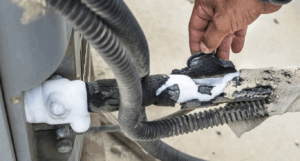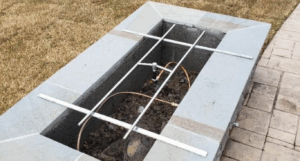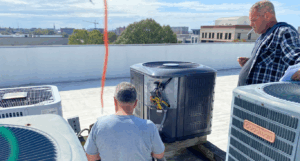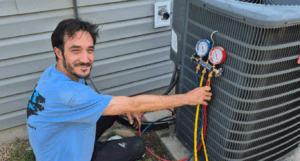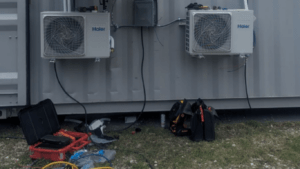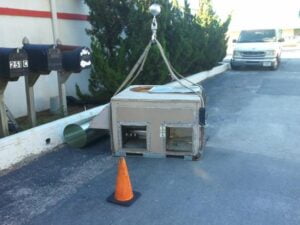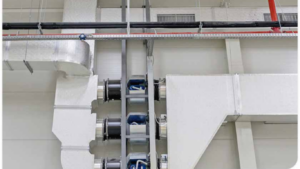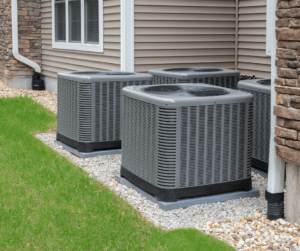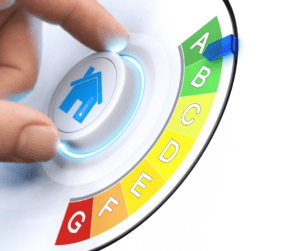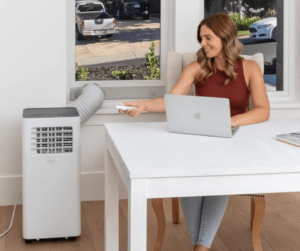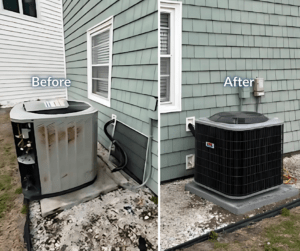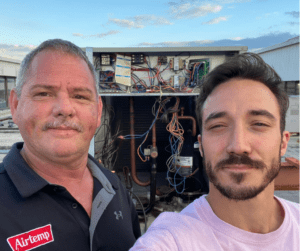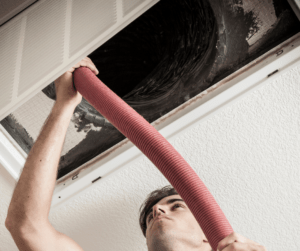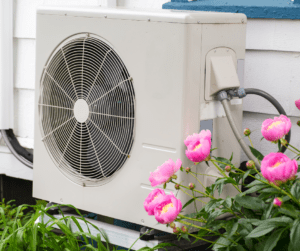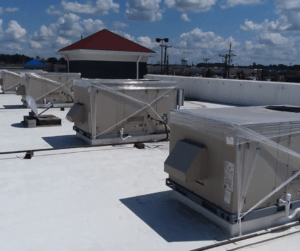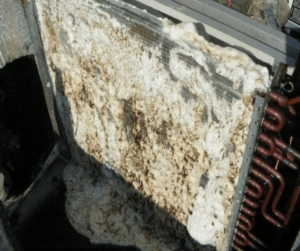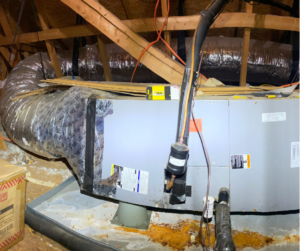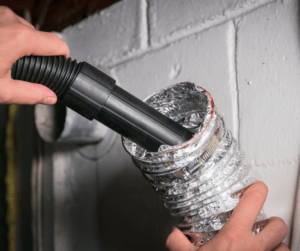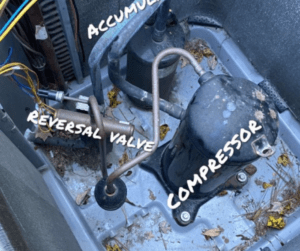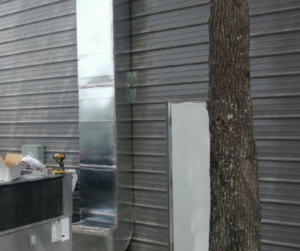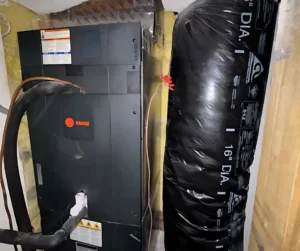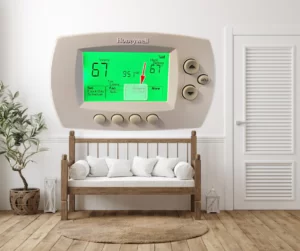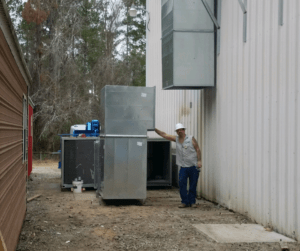How to Fix a Refrigerant Leak Without Losing Your Cool
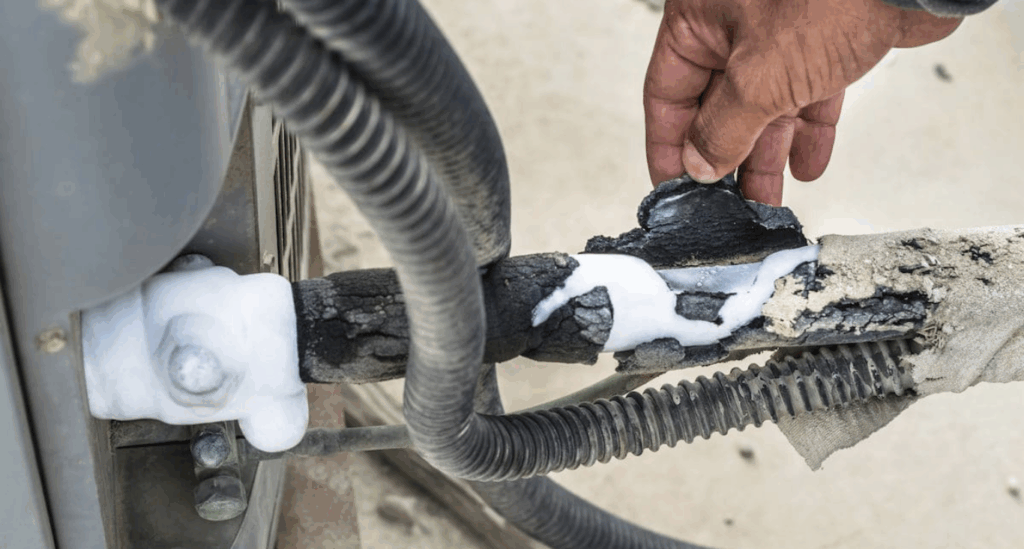
Understanding Refrigerant Leaks
Alright, folks, let’s chat about the thing we all love to hate: refrigerant leaks. These sneaky little devils are like the Houdinis of the HVAC world. One minute your air conditioning is as cool as a cucumber, and the next, it’s like you’re living on the surface of the sun. So, what’s the deal with these leaks? Simply put, a refrigerant leak is when the magical cooling juice in your HVAC system decides it would rather see the world than stay inside your unit. It’s like an unplanned vacation for your refrigerant, except you’re the one paying for it.
When the refrigerant escapes, it leaves your poor HVAC system gasping for breath. Without enough of the good stuff, your air conditioning unit has to work twice as hard to keep things cool, which is basically its way of saying, “Help me, I’m melting!” Not only does this mean you’re sweating like you’re in a sauna, but your energy bills also skyrocket faster than you can say “air conditioning.”
Imagine your refrigerant as the lifeblood of your HVAC system, keeping everything running smoothly. When it decides to take a hike, it can mess with the compressor, making it sound like a beat-up lawnmower. Plus, low refrigerant levels can cause the HVAC unit coils to freeze up—ironic, right? So now, not only is your house hot, but your HVAC system also looks like it’s hosting a winter wonderland.
In short, refrigerant leaks are the ultimate party crashers, turning your cool oasis into a furnace and draining your wallet in the process. If only they’d leave a note before bailing, right?
Identifying Signs of a Leak
So, how do you know if your refrigerant has packed its bags and headed for greener pastures? Well, your HVAC system will give you some pretty obvious hints. First up, let’s talk about noise. If your heating and cooling unit sounds loud like it’s trying out for a garage band with all the clanging and banging, there’s a good chance it’s crying out for help. And then there’s the whole “why is my house suddenly hot like a sauna?” scenario. If it feels like you’re living in a tropical rainforest despite cranking the AC, that’s another big red flag.
Next, keep an eye on your energy bills. If they start looking more like your holiday shopping receipts, something’s definitely up. Sure, electricity isn’t cheap, but when your bill could fund a small country’s GDP, it’s time to get suspicious.
Another sign is the ice show happening inside your HVAC unit. We’re talking about frozen coils. Ironic, right? You’re sweating bullets, and meanwhile, your HVAC system is putting on a winter display like it’s auditioning for an ice-skating championship.
Also, check the airflow. If the air coming out of the vents is weaker than your WiFi signal in the basement, it’s a pretty good indication that something’s gone awry. And let’s not forget about the strange smells. If your unit smells like a mix of gym socks and chemical soup, that’s another clue that your refrigerant has gone AWOL.
Finally, if your home feels as humid as a steam room, it’s time to consider a possible leak. Less refrigerant means less dehumidification, making you feel like you’re walking through pea soup. Keep an eye out for these signs, and you’ll catch that pesky refrigerant leak before it wreaks too much havoc.
Testing for Leaks
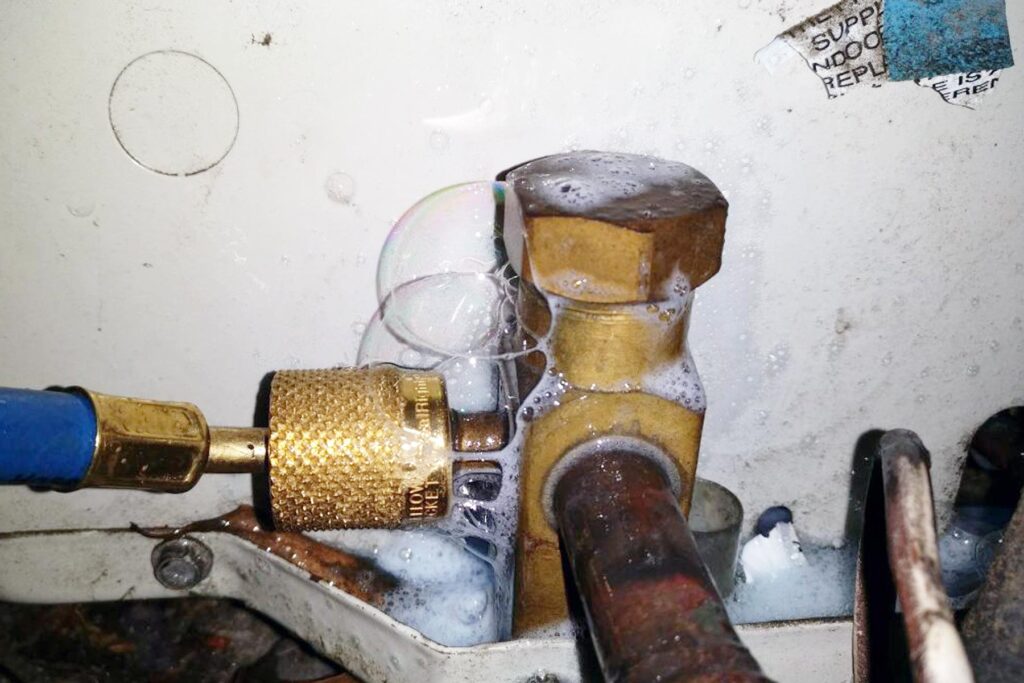
Alright, Sherlock, it’s time to get to the bottom of this refrigerant leak mystery. First up, the tried-and-true soap solution test. This one’s straight out of the DIY detective handbook. Mix up some soap and water, slather it on the suspected areas, and look for bubbles. If you see bubbles, congratulations, you’ve found the suspect! It’s like the leak is trying to send you a smoke signal saying, “Here I am!”
Now, if you’re feeling a bit more James Bond and less MacGyver, there are electronic leak detectors. These nifty gadgets are like the bloodhounds of the HVAC world. Turn one on, and it’ll sniff out that leak faster than a dog finds a treat. Just glide it around the joints, connections, and coils, and listen for the beep. When it goes off, you’ve struck refrigerant-leak gold.
For those of you who like to live on the edge, there’s also the ultraviolet (UV) dye method. Inject some UV dye into your system, run it for a bit, and then break out your UV light. It’s like hosting your very own rave—only instead of dance moves, you’re looking for glowing leaks. Just shine the light around and where it glows, you’ve found the getaway path of your elusive refrigerant.
If you’re not the hands-on type, you can always bring in the big guns—professional HVAC technicians armed with their high-end tools. They’re like the SWAT team of leak detection, minus the dramatic entrances and tactical gear. They’ll get to the bottom of the issue while you kick back and enjoy a cold drink, wondering why you didn’t call them sooner.
Fixing the Leak
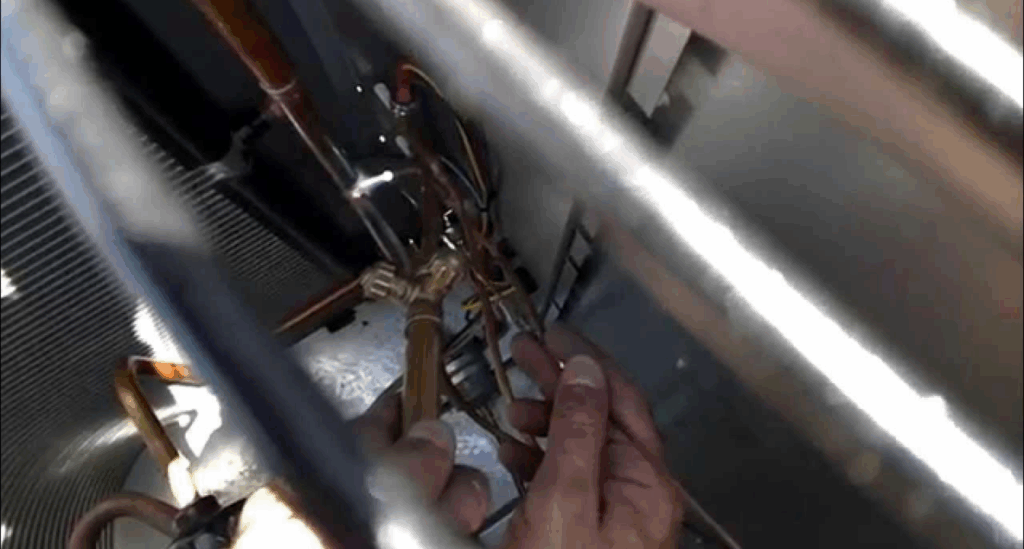
So, you’ve tracked down that elusive refrigerant leak. Congrats! Now, it’s time to fix it before your HVAC system decides to take an extended nap. For those itty-bitty leaks, you can whip out some refrigerant sealants. These are like the superhero band-aids of the HVAC world—just apply and watch the magic happen. It’s almost like the leak never existed, and you can pretend you’re a handy genius for about five minutes.
But let’s be honest: not all leaks are created equal. If the leak is bigger than your capacity to deal with Monday mornings, it’s time to call in the pros. You might think you’re saving money by DIY-ing, but a botched HVAC repair job can cost you more in the long run. And who wants to be the person who turned a small leak into a full-blown HVAC crisis?
When you call in the professionals, it’s like sending your system to a five-star resort. They’ll meticulously find and fix the problem, ensuring your HVAC is good and back to its cool, calm, and collected self. They’ll replace damaged heating and air conditiong parts, re-charge the refrigerant, and even clean up any other messes they find. Basically, it’s an HVAC spa day, minus the cucumber slices and soothing background music.
So, whether you go the DIY route with a sealant or bring in the experts for a top-notch fix, getting that leak sorted out will have you and your HVAC system chilling in no time. Just think of it as a little TLC for your home’s most hardworking appliance.
Preventive Measures

Alright, let’s get down to brass tacks. If you want to avoid the headache of a refrigerant leak, regular HVAC maintenance is your new best friend. Think of it as giving your HVAC system a spa day, minus the mud masks and aromatherapy candles. A little pampering can go a long way in keeping your air conditioning running smoothly. Start with some regular check-ups. Have a pro swing by to inspect things like refrigerant levels, coils, and connections. It’s like having your car serviced—except instead of a greasy garage, you get the comfort of knowing your house won’t turn into an oven.
And let’s talk about filters. When was the last time you swapped those out? If you’re squinting at the screen trying to remember, it’s been too long. Clean filters not only keep the air flowing but also help your heating and air system run more efficiently. It’s the difference between breathing fresh mountain air and sticking your head in a dust cloud.
Keep an eye on those pesky cracks and wear-and-tear spots. Sealing up any potential problem areas can stop a leak before it starts. Consider it a preemptive strike against HVAC chaos.
Don’t forget the outdoor HVAC unit. Clear away any debris or leaves trying to make a cozy home in there. It needs to breathe, too!
Lastly, keep an ear out for any strange noises or smells—your HVAC’s way of saying, “Help me before it’s too late!” Listen to it. Treat your system like the hardworking hero it is, and it’ll keep you cool in return.
Environmental and Safety Considerations

Alright, let’s put on our superhero capes and talk about saving the planet while fixing that pesky refrigerant leak. Spoiler alert: your refrigerant isn’t just making your home cooler; it’s also playing a nasty game with the environment. These bad boys are potent greenhouse gases, and a leak means you’re not just sweating—it’s Mother Earth breaking a sweat, too. So, handle these chemicals like you’re diffusing a bomb. No, really. Dispose of them properly, and don’t just chuck them in the trash like last night’s takeout.
Remember, it’s not just about keeping your home comfy; it’s about not turning the planet into an overheated mess. Be cool—literally and figuratively—by being mindful of how you handle and dispose of refrigerants. Your HVAC system—and the Earth—will thank you!
Conclusion
With the information that you have learned here today, you should have no problem detecting a refrigerant leak in your heating and cooling system. Once you find the leak we suggest contacting a residential or commercial HVAC service company for help fixing the problem.
For more tips on air conditioning and heating repair, installation, and maintenance, be sure to read our following related articles.

